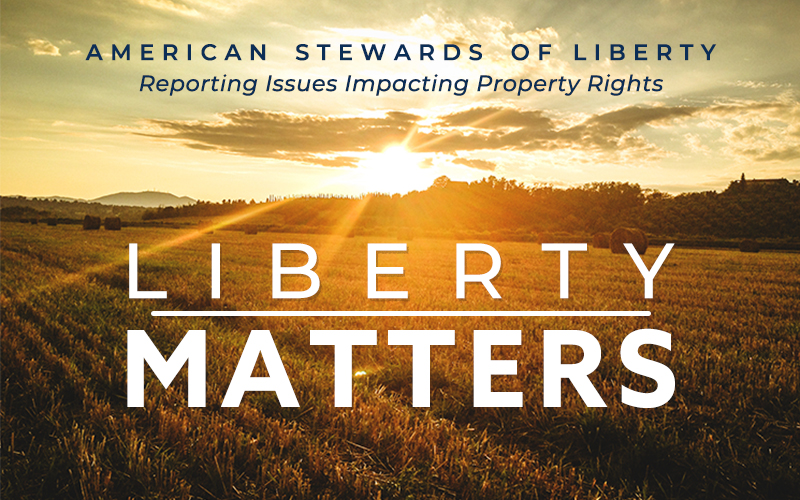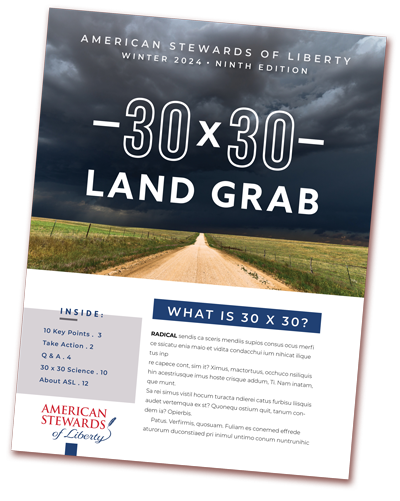The U.S. Senate reversed three Biden rules dealing with endangered species, all in the month of May. The votes were razor thin, but sent a strong message to the administration disapproving of their use of the Endangered Species Act (ESA) to control private property.
In early May, the Senate used the Congressional Review Act (CRA) to overturn the rule used by the Fish and Wildlife Service (FWS) to list two Distinct Population Segments, or DPS, of the lesser prairie-chicken under the ESA. The CRA was brought by Sen. Roger Marshall (R-KS) and was joined by West Virginia Sen. Joe Manchin as the only Democrat to vote with all the Republicans to repeal the rule making the vote 50-48.
Congress can use a CRA to block rules recently promulgated by federal agencies.
According to the FWS, the bird faces “grave threats from degradation and fragmentation of its habitat in five states – Kansas, Texas, New Mexico, Oklahoma, and Colorado.”
Opponents of the listing say it will impose burdensome regulations on farmers and ranchers, oil and gas production, and even wind and solar projects promoted by environmentalists.
The White House has vowed Biden will veto the resolution.
2. Trump-era Definition of Habitat Reinstated
The second CRA, used by the Senate, was introduced by Sen. Cynthia Lummis (R-WY) to roll back the Biden administration’s changes to a Trump-era definition of habitat under the ESA finalized in December 2020. In a 51-49 vote, Sen. Joe Manchin (D-W.VA.) and Angus King (I-ME), joined the Republicans to rescind the Biden rule.
The Trump rule tightened the definition to areas that currently support an endangered species. It attempted to prevent the Fish and Wildlife Service from expanding habitat designations and protect as much private property as possible from burdensome regulations.
Of course, the Biden administration claimed the Trump rule decreased their ability to further the conservation of endangered and threatened species, meaning they couldn’t expand their authority without first removing Trump’s rule.
A critical habitat designation has major impacts on landowners. It reduces the value of private property because it places restrictions on the landowner’s ability to use his land and it creates the federal nexus that triggers multiple limitations on land use and costly mitigation requirements.
This is precisely the reason American Stewards opposes many of the conservation programs being pushed on landowners today because they create this nexus needed to bring more land under the protection of the federal government, which is precisely how they will obtain their goal of protecting 30 percent of our nation’s lands and oceans by 2030.
Sen. Lummis had a very perceptive comment. She said “[T]his CRA ensures landowners in the West are not unfairly targeted by the administration and that habitat designations are based on science, not politics.” Precisely.
3. Overturn Northern long-eared Bat Listing
The third CRA, used on the same day, was sponsored by Sen. Markwayne Mullin (R-OK) and joined by Manchin again, along with Sen. Amy Klobuchar (D-Minn.) to overturn the listing of the northern long-eared bat from threatened to endangered under the ESA.
FWS claimed they needed to upgrade the bat’s designation because of a disease called “white-nose syndrome” (yes, supposedly a real threat to bats across north America). Apparently, the disease is a fungus that looks like white fuzz on bats’ noses and wings and causes the bats to wake up frequently during hibernation causing dehydration and starvation.
The bat is found in 37 eastern and north-central states, plus Washington, D.C. and much of Canada. Opponents of the listing contend it hampers logging and other land uses that are not responsible for the bat’s decline.
Environmental groups all proclaimed using a CRA “has never been used on the Endangered Species Act” and touted the Senate’s move as a “broader, disturbing trend to apply politics to what is typically a scientific decision-making process.” Isn’t that precisely how the environmentalists have misused the ESA by creating false and misleading science to affect political decisions?





